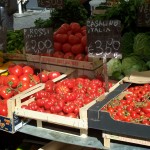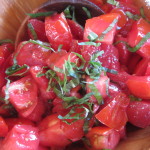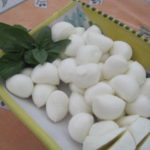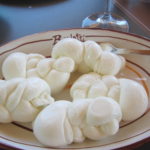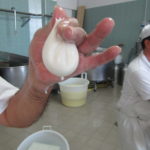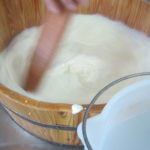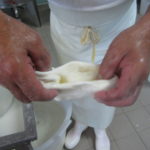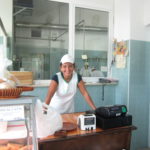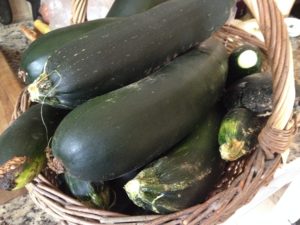 It’s summertime and the garden is bursting with a lot of zucchini! We went to a pick-your-own vegetable farm a few weeks ago when I visited Mary in Dallas and had a great time in the hot sun. Lots of families and little kids. And lots of humongous zucchini no one wanted. We picked them, got a discount because of their size, and made some wonderful meals with them! Check out this farm website to find a pick-your-own farm near you!
It’s summertime and the garden is bursting with a lot of zucchini! We went to a pick-your-own vegetable farm a few weeks ago when I visited Mary in Dallas and had a great time in the hot sun. Lots of families and little kids. And lots of humongous zucchini no one wanted. We picked them, got a discount because of their size, and made some wonderful meals with them! Check out this farm website to find a pick-your-own farm near you!

Zucchini pancakes: grate the zucchini on a box grater or food processor and toss with a couple tablespoons of flour. To 6 cups of grated zucchini, mix in 1 cup chopped scallions, 3 eggs, ½ cup parmigiano, chopped fresh basil and parsley. Right before frying the fritters, add the salt, about 2 teaspoons. If you add it too early, the zucchini gives up liquid and the mixture becomes too wet. Heat a saute pan or griddle on high, oil the pan and drop a spoonful of the mixture to form patties. Fry till browned.
Zucchini pasta sauce: Sauté a little chopped onion and a couple minced garlic cloves in olive oil until softened. Add 3 cups grated zucchini, 2 tbsp chopped parsley and 1 teas salt, cooking until zucchini is soft and wilted. Add ½ cup water and continue to cook thoroughly. Put a little cream in the sauce and bring to a simmer. When your pasta is cooked, add a dollop of pesto or a large handful of chopped basil and stir. Add the cooked pasta with a little pasta water and toss well. Top with parmigiano
Zucchini ripieno, or stuffed: cut the zucchini in half length-wise and scoop out the seeds with a spoon/paring knife. Saute chopped onion and minced garlic until onion is soft. In a bowl, mix the onions with the chopped pulp, fresh bread crumbs, crushed tomatoes, oregano, basil, parsley, and parmigiano. You can mix in Italian sausage or ground beef if you like. Lightly salt and oil the hollowed-out zucchini and stuff them with the mixture. Put them in a baking dish, drizzle well with olive oil and bake till browned. For a Greek twist, use ground lamb and chopped mint.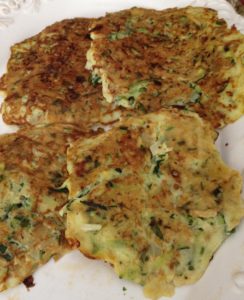
Roasted summer vegetables: Combine a mixture of cubed zucchini, summer squash, red/orange bell peppers and onion and lay out in a single layer on a large sheet pan. If the zucchini is really huge, cut it lengthwise and scoop out the big seeds, then cube the remainder. Place the veggies in a hot oven, 425-450, until well roasted. Put them in a large bowl, drizzle a generous amount of great olive oil and toss with sea salt and minced fresh herbs,. I like a combination of parsley, tarragon, thyme and basil. TIP: heat the empty, clean pan in the oven til it’s hot, wipe a scant amount of oil on the pan. Let it cool before cooking the veg. This keeps them from sticking and makes clean up easier too!
 Here’s a great old photo of my mom in her vegetable garden picking a googutz!
Here’s a great old photo of my mom in her vegetable garden picking a googutz!
She was brilliant with vegetables and some of these recipes are hers. Grazie Mamma! Ti voglio tanto bene
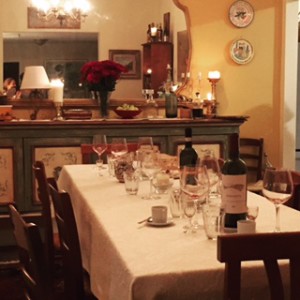
 L
L